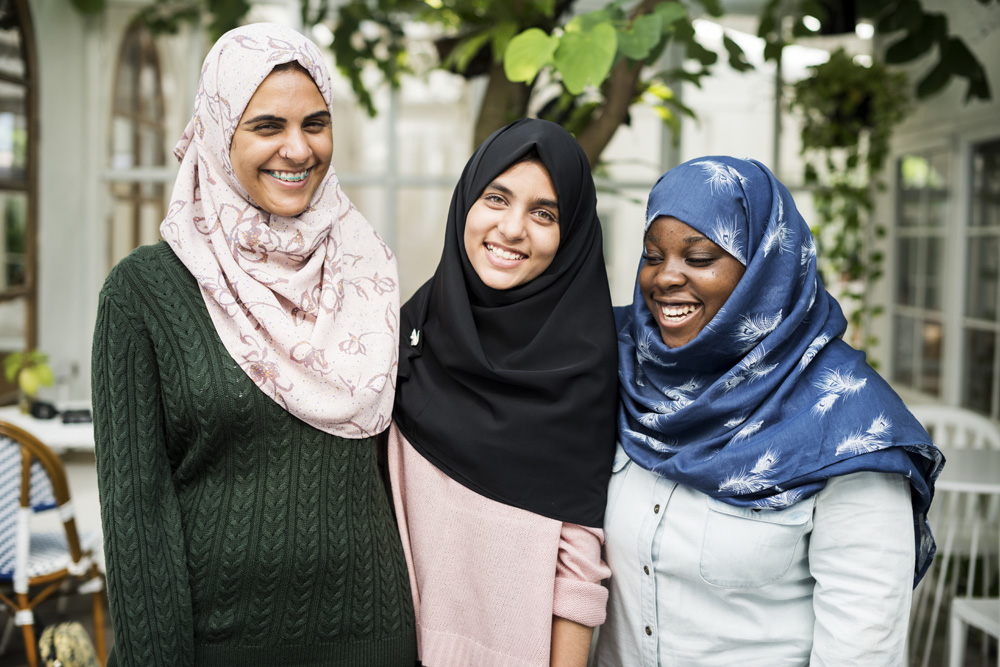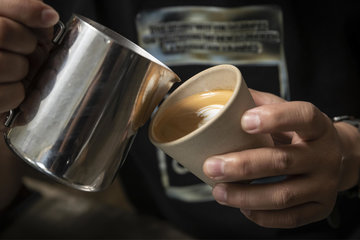
As well as being a month of fasting and giving up all kinds of unhealthy habits and destructive behaviour, Ramadan is a time for tapping into the spiritual and being charitable and caring. And women and girls from all over the world have been exhibiting the exemplary kind of kindness that’s so heartwarming to see during the Holy Month. They are participating in the World Hijab Day Ramadan Hijab Challenge, a 30-day challenge that encourages non-Muslim women to wear a headscarf to draw attention to the discrimination females who cover their hair bear every single day.
Meet our youngest 30 Day #Ramadan #Hijab Challenge participant, Grace. She's a Christian & only 11 years old. She's taking a stand against discrimination against Muslim hijabi women. Please show her your support at: https://t.co/qh8kxKtfT2 #Hijab30 #WorldHijabDay pic.twitter.com/AeSOC6HT12
— World HijabDay (@WorldHijabDay) 17 mai 2018
World Hijab Day (WHD) is behind the initiative that aims to break the negative pigeonholing hijab-wearing women face internationally and build bridges. The non-profit, which was set up to open up ulterior ways to understanding why Muslim women choose to wear the hijab, also invites women to cover their heads for a day on 1 February to mark World Hijab Day.
Pendant le ramadan, des non-musulmanes se voilent par solidarité https://t.co/0zAUk34k9h pic.twitter.com/fQ7JKWfxW3
— Slate.fr (@Slatefr) 6 juin 2018
"The #hijab30 challenge made me realize that no matter where u r, just wear ur #hijab b/c we are doing this to please Allah & no1 else. Ppl making hijabis feel awkward will eventually stop whn they'll see tht their actions don't change our way of dressing up."Tasneem, Mauritius pic.twitter.com/wliHeyV8ZT
— World HijabDay (@WorldHijabDay) 6 juin 2018
"We are not only proud of our participants of 30 Day Ramadan hijab challenge but truly humbled and honoured by their outpouring support," WHD President and Founder, Nazma Khan, told SBS News.
"They are making a huge difference by bringing awareness of hijab which is very much misunderstood especially in the western world. Through their participation, we are hoping to break the negative stereotypes hijab-wearing women face worldwide on a daily basis.”
"I used to not wear the #hijab. I took the 30 day hijab challenge in #Ramadan 2014 when I was pregnant with my first baby. After 30 days, I asked my husband what he thought if I continued wearing it. I've been wearing it ever since. Alhamdulillah." Ashikeen, Malaysia #Hijab30 pic.twitter.com/MwwBWdUqqH
— World HijabDay (@WorldHijabDay) 4 juin 2018
She also told Al Jazeera non-Muslims wearing the hijab, a more visible way of shedding light upon the faith, has a bigger impact than fasting as part of the challenge.
Ellie Lloyd and her 11-year-old daughter, Grace, the youngest to take part in the challenge, are two of the non-Muslim women who are standing in solidarity with those who don headscarves. Ellie, executive director and ambassador for WHD in Qatar, also set up a GoFundMe page to raise money for WHD.
“The intention is to help fight Islamaphobia worldwide and make this world a more accepting and peaceful place to live in,” she writes on the page.
"For the last 10 years, #hijab has been giving me the confidence and inner strength. It reminds me of my responsibility not only for myself and my life, but also for the image of a #Muslim woman in Russia."-Anna #WorldHijabDay pic.twitter.com/WQn76KNEiK
— World HijabDay (@WorldHijabDay) 4 juin 2018
“Ramadan is an important month in the Islamic calendar so what better time to show my support to my hijabi sisters worldwide. As a Christian I feel it is important for all faiths to support each other in their beliefs and their spiritual journey without prejudice,” she also says.
Ellie and Grace have even tweaked their wardrobes to complete the modesty the hijab requires. Grace, who told Al Jazeera she “feels very strongly” about the issue, was greeted with applause from her Doha school classmates when she walked in wearing a black hijab on the first day of Ramadan.
"I am a medical student. I've been wearing the #hijab for about 4 years and half now. It has been the best decision I have ever made!"Alugya, Sudanese American #WorldHijabDay pic.twitter.com/V4WUBU7cVK
— World HijabDay (@WorldHijabDay) 3 juin 2018
"I was very self-conscious that morning because I didn't know how people would react. But when I was about to walk in [to school] I heard 'wooo' and when I went in everyone was clapping in my class and it was really nice," the student said in a YouTube video. "There was a lot of questions during the day, it kind of started to be overwhelming, but I think I did well."
Pamela Zafred, an 18-year-old from Brazil, is also taking part in the challenge. “So my experience made me feel really bad! I felt everyone looking bad at me, some people were making jokes; our classes are in groups and no one wanted to stay with me until the professor divided the groups,"” the student, who was raised as a Christian, wrote on the WHD Instagram page.
Kayla Hajji, a Mormon Christian from California, is wearing a hijab too. Plus, the 35-year-old is fasting. "There is such beauty in coming together as a community of believers to fast that is indescribable unless you participate," she told Al Jazeera.
In #Islam, I found peace; a peace that was missing for so many years. In Islam, I became the best version of myself.-Brittney, Muslim Convert, USA #Hijab #WorldHijabDay pic.twitter.com/9yd7aTOoUu
— World HijabDay (@WorldHijabDay) 1 juin 2018
The Dismaying Figures
Discrimination against Muslims has increased over the past few years, and women wearing the hijab are facing much of the abuse.
* According to statistics by Tell MAMA, a UK-based organisation that monitors Islamophobia , Muslim women made up 56 percent of 765 identified victims. Women were more likely to be attacked or abused if they wore Islamic clothing, and over a third of victims were visibly Muslim women.
* After President Donald Trump came into power and issued an executive order for what became known as the “Muslim ban,” The Council on American–Islamic Relations, a Muslim civil rights and advocacy group, reported a 17 percent increase in anti-Muslim incidents in the US last year, compared with 2016. "A headscarf on a woman was the trigger in 13 percent of the incidents," the group said in a civil rights report.
















